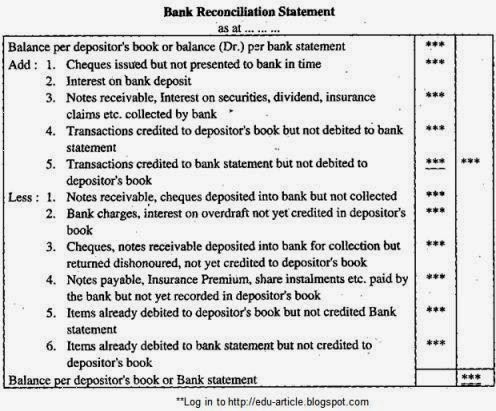The Complete Guide to Accounting for Your Manufacturing Businesses

Activity-based costing or ABC costing can provide a unique picture when utilized to reveal products that generate profits vis a vis those that don’t. The business can then identify activities or production strategies that might require a revamp to ensure the profit margins are extended. While more specific and accurate, activity-based costing might cause businesses to undertake an unnecessary effort in case the products they produce are simplistic, with their costs being more straightforward to track. Effective inventory management not only minimizes disbursement but also enhances operational efficiency and increases profitability. Manufacturing accounting systems offer valuable visibility into key aspects of inventory management, encompassing goods acquisition, stock valuation, and the calculation of moving average costs (MAC). These insights enable businesses to optimize their inventory management strategies and achieve a more streamlined and profitable manufacturing process.

This ultimately impacts profitability and also provides clarity on the various tax rates that apply to the stages of the production process in the manufacturing firm. The process can become complicated and often includes a variety of variables while also relying on a few calculated assumptions to suit the dynamic nature of manufacturing accounting. The process also grows progressively more complex as your operation grows in size and may call for better and more efficient costing and accounting methods to ensure you’re running a sustainable business. It is based on calculating standard rates for the direct and indirect costs of products.
What is your current financial priority?
This will be an accumulation of the money you have spent on direct materials, direct labor costs, and manufacturing overheads on each work-in-process item in your inventory. Along with direct materials and direct labor, you must include the cost of manufacturing overhead to ensure you get the right valuation when it comes to inventory and selling price. In production management, manufacturing cost accounting seeks to determine the cost of goods sold to better understand revenue and profitability at both the business level and the individual product level.
These indirect costs, such as electricity, maintenance, and rent, might not be directly tied to producing a product but are essential for manufacturing operations. Knowing these costs is crucial for pricing products correctly and for profitability. With the help of manufacturing software, it’s easier to manage inventory, figure out the average cost of making each item net working capital according to accounting standards, and ensure there’s enough on the shelf without overflowing. This careful balancing act ensures the manufacturing business can whip up its products efficiently and cost-effectively, just like a master chef.
Ask Any Financial Question
- Get a demo of Katana, and see why thousands of manufacturers trust Katana to manage their entire business.
- For example, raw materials are typically variable because more materials are required to produce more items.
- Generally, this includes the cost of the regular hours, overtime, and relevant payroll taxes.
- To gain a deeper understanding of manufacturing costs and make informed decisions, the software should incorporate data analytics capabilities.
A manufacturing company has no need to prepare a manufacturing account, statement of production, or a cost sheet, before preparing the income statement. The income statement remains the same except for the transfer of goods manufactured to a trading account to be treated as finished goods (at par with purchases). Production costing methods are manufacturing accounting methods used to calculate and analyse your costs to produce finished goods. From a manufacturing accounting perspective, indirect materials are often considered overheads rather than materials. Producing credible financial track records helps businesses reinforce investor faith and build a reputation for honesty. Auditing turbotax official site allows a manufacturing business to ensure that the accounting processes and standards deployed in analyzing a company’s finances are up to the mark.
Manufacturing accounting software systems
Some manufacturing companies prefer to transfer finished goods from the factory to the warehouse at an increased price, by adding a pre-set margin (called the manufacturing profit) to the production cost. According to the complaint, Rite Aid executives committed financial fraud in several areas, one of which involved inventory. At the end of the company’s fiscal year, the physical inventory count showed $9,000,000 less than Rite Aid’s inventory balance on the books, presumably due to physical deterioration of the goods or theft. Rite Aid executives allegedly failed to record this shrinkage, thereby overstating ending inventory on the balance sheet and understating cost of goods sold on the income statement. Accounting for manufacturing overhead costs requires more effort, and can be more challenging compared to other costing efforts because of the difficulty in assigning them to specific products or outcomes. Manufacturing overhead costs are indirect costs that are incurred during a particular accounting period but cannot easily be accounted for on a per-unit basis.
Manufacturing accounting tips.
This lecture will clarify how to prepare the income statement for a manufacturing company. You can automate your inventory management by implementing inventory management software, barcode scanners, and warehouse robotics. These tools serve to boost the efficiency with which how to calculate variable cost per unit your inventory is managed and the accuracy of your stock-on-hand records.
Integrating or upgrading your accounting software, though important, runs the risk of increasing errors in your recorded business data. Let’s look at some of the key systems and features that facilitate efficient manufacturing accounting. Materials and production labour make up the bulk of a manufacturer’s direct costs. Manufacturing supplies, wages for non-production staff, and overheads like fuel or electricity can also all be considered direct costs.
Finance Strategists is a leading financial education organization that connects people with financial professionals, priding itself on providing accurate and reliable financial information to millions of readers each year. For information pertaining to the registration status of 11 Financial, please contact the state securities regulators for those states in which 11 Financial maintains a registration filing. To get off on the right foot with data hygiene, invest in good systems and follow the correct steps to implement them. Automation and efficient implementation will reduce the number of human errors and the likelihood of other issues arising in the future.
